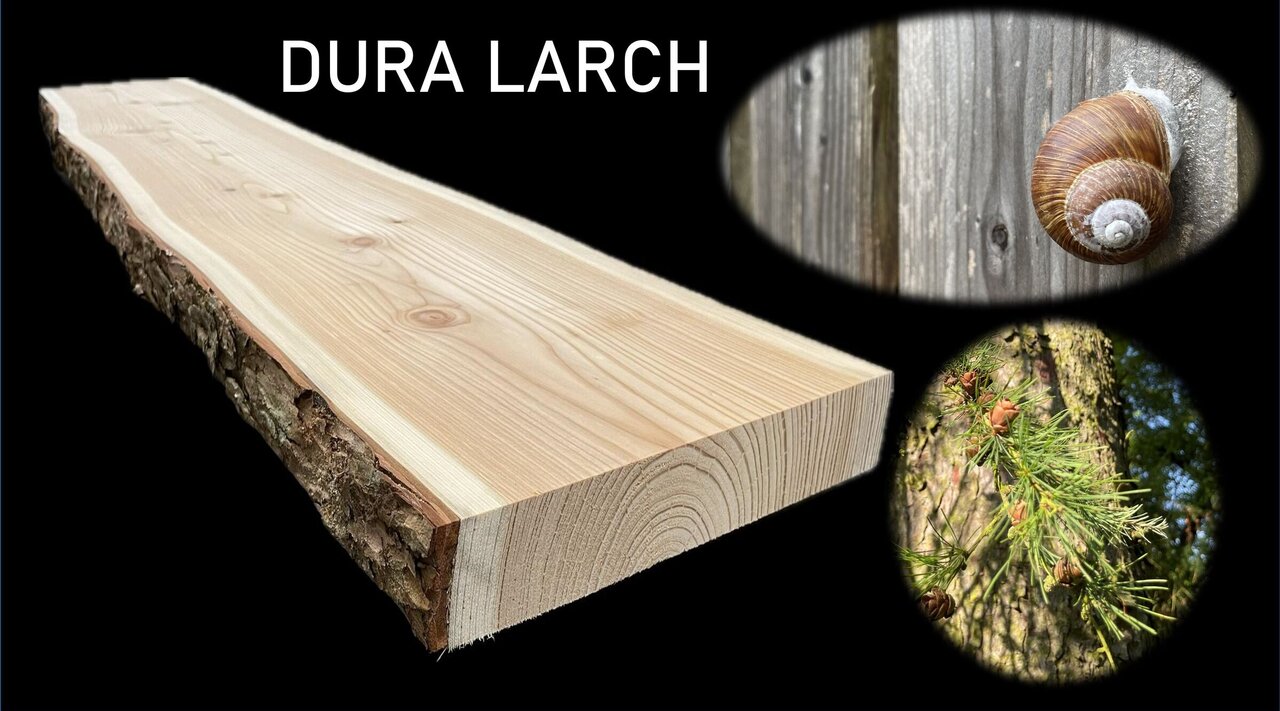Project
Origin-specific durability of coloured coniferous heartwoods

Investigation of the suitability of selected coloured coniferous heartwoods of different origin for their use in outdoor applications
Background and Objective
For outdoor applications with high demands on biological durability (use classes 3.1 and 3.2), there are only a few softwoods available that also have high density and strength characteristics. One of the most important timbers with these material properties is Siberian larch (Larix sibirica, Larix gmelinii), which is available in sufficient quantities due to its large distribution area. Imports of Siberian larch from Russia have therefore been established over decades exclusively for many areas of use, e.g. in structural frame construction as well as for terrace decks, windows and external cladding. As a result of the war in Ukraine that Russia started in 2022 and the resulting sanctions, the trade with Siberian larch came to an almost sudden standstill and the remaining stocks were used up within a few months.
The German wood trade is currently trying to close the bottlenecks that have arisen while demand is high with different alternative woods. While the wood of the European larch (Larix decidua) or Douglas fir (Pseudotsuga menziesii) grown in Germany can be used for applications in which the biological durability of the wood is not crucial, other areas require wood with higher durability and sometimes also higher density and slow-grown wood, as is characteristic of Siberian larch. Among other things, Canadian larch (Western larch, Larix occidentalis), Oregon pine (Douglas fir) from western North America and Dahurian larch (Larix gmelinii) from northern China are imported. Individual woods from the group of softwoods with coloured heartwood described here have already been examined in the past with regard to their biological durability. However, a comprehensive comparative study that also includes Siberian larch is still missing.
As part of the project, different species of larch as well as Douglas fir and western red cedar of different origins will be comprehensively examined. In addition to laboratory and field studies on biological durability, density and extractive content are determined and the sorption and moisture behaviour of the wood is characterized. The overarching goal of the project is to create property profiles for targeted use of the wood and a possible replacement for Siberian larch, which is no longer available.
Target Group
Timber traders, planners, wood-working industry and craftsmen
Approach
Wood from the tree species Siberian larch (Larix sibirica), Western larch (L. occidentalis), Tamarack (Eastern larch, L. laricina), Japanese larch (L. kaempferi), European larch (L. decidua), Dahurian larch (L. gmelinii), Douglas fir (Oregon pine, Pseudotsuga menziesii) and Western red cedar (Thuja plicata) will be examined comparatively. For this purpose, material from different origins, including European locations, is used. The biological durability of wood against wood-destroying fungi will be investigated in the laboratory and in the field. In addition to material resistance, the woods will be characterized in terms of their density, annual ring structure and extractive content. The sorption behaviour and capillary water uptake as key influencing factors for the performance of outdoor wood products are also being investigated. In order to be able to assess the different durability of wood more quickly and specifically in the future, spectroscopic methods (here: NIR Near Infrared Spectroscopy) will be used and models will be developed to determine material resistance.
Our Research Questions
- How do the species within the genus Larix differ in terms of the biological durability of their wood?
- Which substitute timbers – separated by type of wood and origin – are available as a replacement for Siberian larch in outdoor applications?
- What role do the extractive substance content and density of coniferous heartwoods play in their durability and moisture behaviour when exposed to weathering?
- How accurately can the biological durability of the wood of coniferous heartwoods be determined non-destructively and with a minimum of time using spectroscopic methods?
Involved Thünen-Partners
Duration
4.2024 - 9.2035
More Information
Project status:
ongoing







